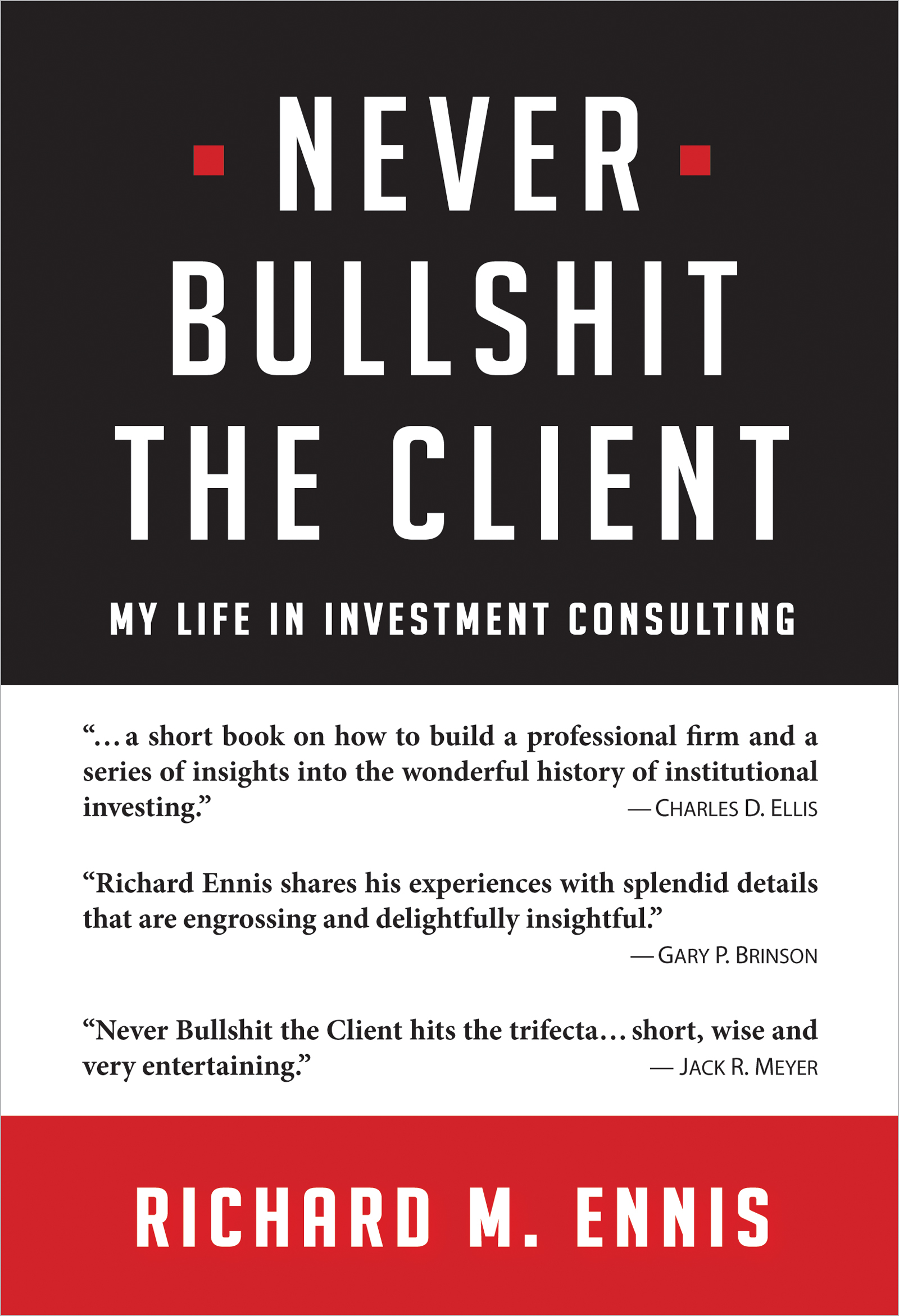Cliffwater and Ennis Don’t Agree on the Merits of Alternative Investments: Quelle Surprise!
Cliffwater and I disagree on whether alternative investments have been good for public pension funds in the US. Cliffwater recently issued a report that shows public funds achieving value-added of +0.63% per year over a market index benchmark for the fiscal years 2001-2024.[1] Cliffwater’s value-added figure for the most recent 10 fiscal years is +0.92% per year. I estimate value-added of -0.96% per year over the 16 years ended June of 2024.[2] We differ in our assessment of value-added by roughly 150 bps per year, a yawning gap by any standard.
In terms of composition and observed return, our public fund data differ in only minor ways. Both studies use the same end date, June 30, 2024, which is important. And although the time periods studied differ, all are of sufficient duration to fairly gauge the efficacy of active management, which is what this is all about. The striking difference between our results is primarily attributable to the benchmarks we use.
Regarding benchmarks, during the 16-year period ended June of 2024, there was a dramatic difference in the returns for US and non-US stock markets. US stocks had an annual return of 11.4%, while non-US stocks had a return of 3.4%, for a difference of 8.0 percentage points per year. As we shall see, this difference is of prime importance in accounting for the disparity in value-added results noted above.
My benchmark comprises 52% US equity, 19% non-US equity, and 29% US bonds.[3] It is based on a regression of public fund composite returns on market indexes using William Sharpe’s returns-based style methodology. Sharpe’s method infers benchmark weights from observed returns in a powerful way. The ratio of US to non-US equity of 2.7 (52 / 19) reflects the fact that, when regressing public fund returns on market indexes, virtually all of the returns of the alternative investments load on US indexes. This is another way of saying that the underlying alternative assets reside in the US domain, for all intents and purposes. Which in turn indicates that public pension funds exhibit the well-known home bias in their overall portfolio construction — and even more strongly with alts than with public equities. (Home bias is also evident in the funds’ bond investments, which are restricted to US-dollar issues in practice.)
Cliffwater’s benchmark is 70% MSCI ACWI (global) stocks and 30% Bloomberg US Aggregate bonds. They use this benchmark for the whole of public pension fund investing, retroactively to 2001, even though public pension funds had an allocation of not more than about 12% of total assets to non-US equities in 2000.
Exhibit 1 compares the two benchmarks. I estimate effective US and non-US equity percentages for the Cliffwater 70-30 benchmark using the regression procedure described above.[4] Exhibit 1 indicates a dramatic difference in non-US stock market representation between the two benchmarks. The Cliffwater benchmark has a much larger effective allocation to the lesser-performing non-US markets. As a result, there is a difference in benchmark returns of 1.5 percentage points per year, which approximates the difference in observed value-added mentioned in the first paragraph.
Exhibit 1
Effective Market Representation and Return of Benchmarks
(Fiscal years 2009-2024)
|
Benchmark for Public Fund Composite |
US Equity Percentage |
Non-US equity Percentage |
Bond Percentage |
16-Year Annual Return |
|
Ennis |
52 |
19 |
29 |
7.8% |
|
Cliffwater |
37 |
33 |
30 |
6.3 |
|
Difference |
15 |
-14 |
-1 |
1.5 |
Cliffwater’s 70-30 global equity benchmark does have about it an aura of simplicity and universality that may help it go down easily in some quarters. But it is arbitrary: It has no empirical basis, and Cliffwater provides no logical justification for its design. The only thing we know for sure about Cliffwater’s 70-30 benchmark is that it produces a rosy picture of public fund performance, with the funds apparently earning back all of their expenses plus a goodly net alpha. This is an extraordinary result for a 64-fund composite with quintessential diversification — an average of more than 100 managers per fund — and an overall expense ratio of 1% or more.
Now, going forward this might be a dandy benchmark for funds that are open to extensive international equity diversification. I’m all for international diversification as a matter of policy. But Cliffwater’s “70-30” is a poor gauge for evaluating the past performance of public pension funds in the US.
[1] See Alternatives Benefit Long-Term US Pension Performance, June 9 (2025): https://www.cliffwater.com/ResourceArticle/alternatives-benefit-longterm-state-pension-performance?docId=27838.
[2] See The Demise of Alternative Investments: https://papers.ssrn.com/sol3/cf_dev/AbsByAuth.cfm?per_id=3599134.
[3] The respective indexes are Russell 3000 stocks, MSCI ACWI ex-US stocks, and Bloomberg US Aggregate bonds.
[4] You can think of these percentages as the static allocation among market components that produce the same return as the benchmark over the full period.

